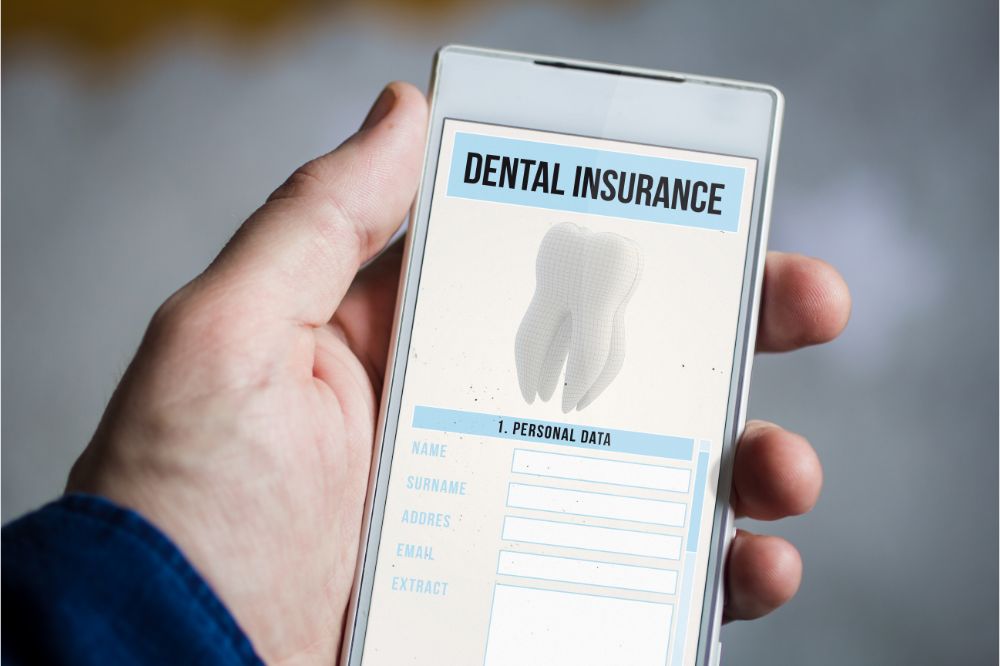Imagine needing a root canal or a crown but facing a lengthy waiting period before your dental insurance kicks in. This scenario highlights the crucial benefit of full coverage dental insurance with no waiting period – immediate access to necessary care without the financial burden of a delayed start. This type of plan offers a lifeline, empowering individuals to prioritize their oral health without the worry of waiting periods or coverage restrictions.
Full coverage dental insurance, as the name suggests, covers a wide range of dental procedures, from routine cleanings and fillings to more complex treatments like implants and dentures. The absence of a waiting period ensures that individuals can access these services immediately, promoting proactive care and preventing potential complications that could arise from delaying treatment. This comprehensive coverage empowers individuals to take control of their oral health and avoid the stress and financial strain associated with unexpected dental emergencies.
Understanding Full Coverage Dental Insurance

Full coverage dental insurance is a type of plan that covers a wide range of dental procedures, often with minimal or no out-of-pocket costs. This type of insurance is designed to provide comprehensive protection against dental expenses, giving you peace of mind knowing that your dental health is well-covered.
Key Features of Full Coverage Dental Plans
Full coverage dental plans typically share a set of common features. Understanding these features is essential when comparing plans and selecting the best option for your needs.
- Comprehensive Coverage: Full coverage plans generally cover a broad spectrum of dental services, including preventive care, restorative treatments, and even cosmetic procedures. This means you’ll have access to a wide range of services, ensuring that your dental needs are met without significant financial burden.
- Low or No Deductible: A deductible is the amount you pay out-of-pocket before your insurance starts covering your dental expenses. Full coverage plans often have low or no deductibles, making it easier to access necessary dental care without facing a large upfront cost.
- High Coverage Limits: These plans typically have high annual coverage limits, allowing you to access a wide range of treatments without exceeding your coverage. This is particularly beneficial for individuals who require extensive dental work or are prone to dental issues.
- Low Co-pays: Co-pays are fixed amounts you pay for each dental service. Full coverage plans generally have low co-pays, making dental care more affordable and accessible.
Common Dental Procedures Covered
Full coverage dental plans often cover a wide range of common dental procedures. These include:
- Preventive Care: This includes routine checkups, cleanings, and dental X-rays. These services are crucial for maintaining good oral health and preventing more serious dental problems from developing.
- Restorative Treatments: This category includes procedures like fillings, crowns, bridges, and root canals. These treatments address existing dental issues and restore the functionality and aesthetics of your teeth.
- Cosmetic Procedures: While not always included in full coverage plans, some may offer coverage for cosmetic procedures like teeth whitening or dental implants. It’s essential to review the specific coverage details of each plan.
The Significance of “No Waiting Period”

A waiting period is a common feature in many dental insurance plans. It dictates the period of time an insured individual must wait before they can access certain dental services. However, full coverage dental insurance plans with no waiting period offer immediate access to comprehensive dental care, providing significant advantages for individuals and families.
The Benefits of No Waiting Period Dental Coverage
The absence of a waiting period removes the hurdle of delayed access to essential dental care. This is particularly beneficial for individuals with pre-existing dental conditions or those who require immediate treatment. With no waiting period, individuals can receive necessary care without delay, preventing potential complications and ensuring their oral health is prioritized.
Exploring Different Types of Dental Insurance

Understanding the different types of dental insurance plans is crucial for choosing the best option for your individual needs and budget. Each plan type offers a unique blend of coverage and cost, impacting your out-of-pocket expenses and the scope of dental services you can access.
Types of Dental Insurance Plans
Dental insurance plans can be broadly categorized into three main types:
- Dental HMO (Health Maintenance Organization): HMO plans typically offer a network of dentists you must choose from. They usually have lower premiums compared to other plans but may have stricter limitations on coverage and out-of-network options.
- Dental PPO (Preferred Provider Organization): PPO plans offer more flexibility than HMOs, allowing you to choose from a broader network of dentists. They generally have higher premiums but provide greater coverage and out-of-network options with higher copayments.
- Dental Indemnity Plans: Indemnity plans offer the most flexibility, allowing you to choose any dentist you wish. They typically have the highest premiums but offer the widest coverage and fewer restrictions.
Comparison of Coverage
The coverage provided by each plan type varies significantly.
- Dental HMOs: These plans often have lower annual maximums and may not cover certain procedures like cosmetic dentistry or implants. They typically have lower copayments for in-network services but higher copayments for out-of-network services.
- Dental PPOs: These plans usually have higher annual maximums than HMOs and may cover a wider range of procedures. They generally have higher copayments for both in-network and out-of-network services.
- Dental Indemnity Plans: These plans typically have the highest annual maximums and cover a wide range of procedures, including cosmetic dentistry and implants. They often have higher premiums but offer the most flexibility and freedom of choice.
Pros and Cons of Each Plan Type
Each plan type has its advantages and disadvantages:
Dental HMO
Pros
- Lower premiums compared to other plans.
- Predictable costs for in-network services.
Cons
Dental PPO
Pros
Cons
Dental Indemnity
Pros
Cons
Key Factors to Consider When Choosing a Plan

Choosing the right dental insurance plan can be a complex decision, especially when considering the various options available. It’s crucial to carefully evaluate your needs and prioritize the factors that matter most to you. By considering these key aspects, you can make an informed decision and select a plan that provides comprehensive coverage and value for your money.
Factors to Consider
To ensure you choose a dental insurance plan that aligns with your individual needs and financial situation, it’s essential to consider a range of factors. These factors can be grouped into several categories, each influencing your overall experience and the benefits you receive.
| Factor | Importance | How to Evaluate |
|---|---|---|
| Premiums | Monthly premiums represent the cost of your dental insurance. Lower premiums are generally more appealing, but it’s essential to balance this with coverage levels. | Compare premiums from different insurers and plans, considering the coverage they offer. Look for plans with premiums that fit your budget without sacrificing essential coverage. |
| Coverage Limits | Coverage limits define the maximum amount your insurance will pay for specific dental procedures. Higher limits provide more financial protection, especially for expensive treatments. | Review the coverage limits for different procedures, such as cleanings, fillings, crowns, and implants. Ensure the limits are sufficient to cover your anticipated dental needs. |
| Deductibles | The deductible is the amount you pay out-of-pocket before your insurance coverage kicks in. Lower deductibles mean you pay less upfront, but your overall premium might be higher. | Compare deductibles across plans and assess how they impact your overall cost. Consider your anticipated dental expenses and choose a deductible that aligns with your budget. |
| Network Providers | A network provider is a dentist who has partnered with your insurance company to offer discounted rates. Choosing a dentist within the network can significantly reduce your out-of-pocket expenses. | Check the provider network for your chosen plan and ensure it includes dentists in your area whom you trust. Verify the network’s coverage for specific procedures and specialists. |
Understanding Dental Insurance Costs
Dental insurance, like any other type of insurance, involves costs associated with coverage. Understanding these costs is crucial for making informed decisions about your dental care and budget. This section delves into the various components of dental insurance costs and provides insights into factors that influence these costs.
Factors Influencing Dental Insurance Costs
The cost of dental insurance is influenced by several factors, including the type of plan, coverage levels, age, location, and individual dental health.
- Type of Plan: Different types of dental insurance plans have varying coverage levels and premium costs. For instance, a comprehensive plan with a wide range of covered services typically has higher premiums than a basic plan with limited coverage.
- Coverage Levels: The extent of coverage offered by a plan directly impacts the cost. Plans with higher coverage limits, such as those with higher annual maximums or lower deductibles, generally come with higher premiums.
- Age: Younger individuals generally have lower dental insurance premiums compared to older individuals, as they tend to have fewer dental health issues.
- Location: The cost of dental care varies by location, and insurance premiums may reflect these regional differences. Areas with higher costs of living or a higher concentration of dental professionals may have higher premiums.
- Individual Dental Health: Pre-existing dental conditions or a history of frequent dental visits can influence premium costs. Individuals with higher dental health risks may be charged higher premiums.
Minimizing Dental Insurance Costs
While dental insurance costs are unavoidable, there are strategies to minimize them.
- Shop Around: Compare quotes from different insurance providers to find the most competitive rates and coverage options.
- Consider a High Deductible Plan: Opting for a high-deductible plan can lower your premiums but requires you to pay a higher out-of-pocket cost before insurance kicks in.
- Negotiate with Your Employer: If you have employer-sponsored dental insurance, discuss the possibility of negotiating a lower premium rate or a plan with more favorable coverage terms.
- Practice Good Oral Hygiene: Maintaining good oral hygiene habits can help prevent dental problems and reduce the need for expensive dental treatments, potentially lowering your overall dental insurance costs.
- Utilize Preventive Care: Take advantage of preventive care services like regular checkups and cleanings, which are often covered at a lower cost or even fully covered by dental insurance. These services can help detect and address dental issues early, potentially preventing more expensive treatments later.
Benefits of Full Coverage Dental Insurance with No Waiting Period
Full coverage dental insurance with no waiting period offers significant advantages, providing comprehensive protection for your oral health without any delay in coverage. This type of insurance can be a valuable investment, enabling you to access essential dental care promptly and prevent potential complications.
Improved Oral Health Outcomes
Full coverage dental insurance with no waiting period can significantly improve oral health outcomes by facilitating timely access to preventive, diagnostic, and restorative dental care. This is especially beneficial for individuals with pre-existing dental conditions or those at high risk for developing oral health problems.
“Studies have shown that individuals with dental insurance are more likely to seek regular dental care, leading to improved oral health and reduced risk of serious dental issues.” – American Dental Association
- Early Detection and Prevention: Regular dental checkups and cleanings are crucial for early detection of dental problems. Full coverage insurance encourages individuals to schedule these appointments, allowing for timely intervention and preventing minor issues from escalating into more serious problems.
- Prompt Treatment of Dental Emergencies: Dental emergencies can arise unexpectedly, causing pain and discomfort. Full coverage insurance with no waiting period ensures that you can receive immediate treatment for dental emergencies, such as toothaches, broken teeth, or infections, without the burden of high out-of-pocket costs.
- Access to Specialized Treatments: Some dental conditions require specialized treatments, such as root canals, crowns, or implants. Full coverage insurance provides access to these services, ensuring that you receive the necessary care to restore your oral health and maintain a beautiful smile.
Common Exclusions and Limitations
While full coverage dental insurance with no waiting period offers comprehensive benefits, it’s crucial to understand that it may not cover all dental procedures and services. Certain exclusions and limitations are common across most dental insurance plans.
Procedures and Services Not Covered
It’s essential to carefully review your policy documents to understand what’s included and excluded. Common examples of procedures or services that may not be covered under full coverage plans include:
- Cosmetic Procedures: Procedures solely for aesthetic purposes, such as teeth whitening, veneers, or dental implants for purely cosmetic reasons, are often excluded.
- Pre-Existing Conditions: Some plans may have limitations or exclusions for pre-existing dental conditions, such as extensive tooth decay or gum disease, that were present before the policy’s effective date.
- Experimental or Investigational Procedures: Dental procedures considered experimental or investigational, not widely accepted in the dental community, are typically excluded.
- Routine Maintenance: While some plans may cover a portion of routine maintenance, such as regular checkups and cleanings, others may have limitations on the frequency or coverage amount.
Maintaining Good Oral Health
A proactive approach to oral health is crucial for maintaining overall well-being. This section delves into essential tips and practices for safeguarding your smile and promoting good oral hygiene.
Regular Dental Checkups and Cleanings
Regular dental checkups and cleanings are fundamental to maintaining good oral health. These visits allow a dentist to identify and address potential issues before they become serious.
- Frequency: The American Dental Association (ADA) recommends scheduling dental checkups and cleanings every six months. However, individuals with specific oral health conditions may require more frequent visits.
- Benefits: Regular dental checkups and cleanings help prevent cavities, gum disease, and other oral health problems. They also provide an opportunity for early detection of oral cancer and other conditions that may not present obvious symptoms.
- Professional Cleaning: During a cleaning, a dental hygienist removes plaque and tartar buildup from teeth, which can contribute to cavities and gum disease.
Oral Health and Overall Well-being
Oral health is intricately linked to overall well-being. Neglecting oral health can have far-reaching consequences for your overall health.
- Heart Disease: Studies have shown a correlation between poor oral health and an increased risk of heart disease. Bacteria from the mouth can enter the bloodstream and contribute to inflammation in the arteries, leading to heart disease.
- Diabetes: Individuals with diabetes are more susceptible to gum disease, which can make it more challenging to manage blood sugar levels.
- Pregnancy: Poor oral health during pregnancy can increase the risk of premature birth and low birth weight.
Concluding Remarks

In a world where oral health plays a pivotal role in overall well-being, full coverage dental insurance with no waiting period offers a compelling solution. It removes the barriers of waiting periods and coverage limitations, allowing individuals to prioritize their oral health with confidence. By providing immediate access to a wide range of dental services, these plans empower individuals to maintain their oral health, prevent costly complications, and enjoy the benefits of a healthy smile for years to come.

